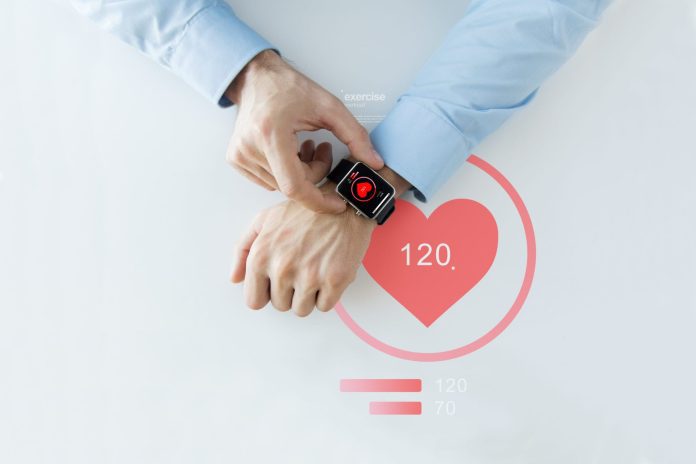KPMG: “As we begin to emerge from the pandemic, we’ve witnessed a major shift of momentum into large-scale digital transformation, and this has caused healthcare leaders to desire a comprehensive digital strategy…
 In a conversation with Enterprise IoT Insights, KPMG Managing Director, Emerging Technologies, Michael Krajecki considers the challenges and opportunities for driving IoT adoption into the healthcare sector, and provides insight on how patient expectations for digital experiences throughout the care progression are shaping investment from medical providers.
In a conversation with Enterprise IoT Insights, KPMG Managing Director, Emerging Technologies, Michael Krajecki considers the challenges and opportunities for driving IoT adoption into the healthcare sector, and provides insight on how patient expectations for digital experiences throughout the care progression are shaping investment from medical providers.
Q: We’ve heard broad discussion of how COVID accelerated the digital transformation of vertical industries. Specific to healthcare, have you observed that same acceleration of technology investments?
A: Before COVID, the healthcare industry was gaining momentum with various technology investments and initiatives. The experiences over the last year have magnified the technology shortcomings that many healthcare providers struggle with, including a lack of effective digital communication channels, minimal interoperability among systems, and large amounts of expensive tech-debt that isn’t meeting clinician or patient expectations. As we begin to emerge from the pandemic, we’ve witnessed a major shift of momentum into large-scale digital transformation, and this has caused healthcare leaders to desire a comprehensive digital strategy that expands across the patient care continuum and accelerates innovation throughout the health system. At KPMG, we are combining our deep healthcare experience with patient-centric design and modern digital architecture and emerging technologies. We are helping our healthcare clients bring their vision to life throughout the digital transformation lifecycle.
How has the healthcare sector fared with tech adoption?
Q: Could you give me a candid assessment of where hospitals or healthcare facilities are in general on the technology adoption curve–are they leading, lagging, consistent with other verticals?
A: Healthcare providers really span the spectrum of technology adoption. The world-class leading health institutions have long been on the cutting edge of technology, including early adoption of cloud platforms, artificial intelligence, and the Internet of Medical Things. However, most health systems are lagging other industries. They carry a lot of isolated point-solutions, M&A growth has created a fragmented technology infrastructure, and healthcare data comes with a significant regulatory and compliance burden. Combined with very lean margins and limited investment funds, digital technology innovation hasn’t always been a priority. Fortunately, the tides have quickly turned and the demand for digital health experiences is accelerating adoption.
Q: In your engagements with customers in the healthcare sector, what types of problems are they typically trying to solve with technology investments?
A: We are seeing healthcare technology investments being very focused on how to drive better patient experiences and outcomes. For patient experiences, there is an undeniable need for a modern digital front door that serves the patient throughout their care progression. People have grown accustomed to elegant digital experiences and expect the ability to interact and transact with a few touches of a screen. Patients are asking why it is so difficult to schedule and manage appointments, why the registration process is redundant and often tied to clip boards, why they don’t have easy access to medical records and test results, etc. I expect our digital interactions with our health provider to greatly evolve and improve in the coming years, and it may become a brand differentiator for health systems to attract and maintain patients.
There are also major investments occurring related to clinical care. The power of modern technology has truly helped the industry move closer to precision medicine. Connected biomedical devices are providing new treatment options, AI and ML are helping us predict adverse events before they happen, and concepts like remote/virtual surgery are becoming a reality. Technology investments in healthcare are literally saving lives every day.
Key healthcare IoT use cases
Q: Specific to IoT in a healthcare environment, what are the primary use cases you’re seeing today and what use cases do you expect to gain traction in the near- to mid-term?
A: The internet of things has become pervasive within healthcare facilities. Everything from the thermostats controlling the operating room temperature, to the pulse oximeter on the patient’s finger, to the robotics used by a surgeon, are all likely internet-connected and collecting mass amounts of data. Modern hospitals have thousands of IoT devices.

One of my favorite IoT topics is wearable monitoring devices. These can range from consumer-grade watches to inpatient clinical-grade vital sign monitors. It’s amazing how much innovation has occurred with the sensors capable of monitoring all the major vital signs within a small wireless adhesive patch or wristwatch. Wearables are being used in clinical trials to reach wider populations of participants, they are being leveraged to extend the point of care before and after hospital visits, and they are providing better ways of remotely monitoring inpatients across all nursing units. The industry is just starting to understand the significant impact wearables can have on clinical outcomes, as the real magic lies within the new treasure trove of data that is streaming from these devices. Many healthcare organizations are currently analyzing this data using advanced AI/ML techniques to understand the patterns and correlations hidden within our vital signs, and combining these data insights with personal health history, recent test results, or genetics has the potential to alter the way we make clinical care decisions.
Q: How do privacy concerns and regulations related to patient information figure into IoT decisions made by healthcare stakeholders?
A: Healthcare providers continue to be one of the most targeted industries for cyberattacks, especially focused on data theft and ransomware. In combination with the extensive regulatory requirements for handling protected health information (PHI), there is a lot to consider when implementing new IoT solutions for healthcare. We are seeing the leaders in the industry build dedicated capabilities related to medical device security, improve their IT asset management programs to cover IoT devices, and embrace the concepts of security and privacy by design. The by design concepts require rethinking the way hospitals segment their networks, requiring more involvement by information security functions during device procurement and onboarding, and establishing more robust device monitoring and governance capabilities.
As healthcare IT functions continue to improve their capabilities around protecting IoT devices, it’s important for everyone in the healthcare setting to understand what IoT devices are capable of and seek to understand where PHI data resides at all times.
Q: Can you share any insight into how healthcare C-suites are thinking about 5G and private networks, if at all?
A: Like other industries, there is a lot of ideation and experimentation occurring related to 5G. The increased bandwidth and ultra-low latency can be a huge benefit to support the growing amount of IoT devices used by a hospital. Many hospitals struggle with poor Wi-Fi performance and bandwidth issues, and 5G also helps with modern network concepts like micro-segmentation. 5G can also benefit hospital-at-home programs, which are increasingly placing IoT devices in patients’ homes. We are quite early on the 5G adoption curve for healthcare, but I think the conceptual benefits are well-known and we’ll see 5G make an impact to healthcare in the near future.
Private networks gained a lot of interest during the early stages of the pandemic when healthcare systems were creating pop-up facilities to increase bed capacity. One of the challenges faced was how to extend the hospital network to a remote location and provide the necessary connectivity for the clinical technology equipment. If a hospital was already using private cellular network technology, the ability to extend the network to a new location could have been more easily accomplished without the costly infrastructure requirements.
Q: Zooming back out from IoT for healthcare to IoT for enterprises in general, what challenges to adoption and tying investment to a use case and business case are you tracking?
A: We’ve reached the point that technology has sufficiently advanced and the cost structures are reasonable, so we at KPMG are focused on helping our clients identify the right use-cases, rapidly experimenting and evaluating, and implementing IoT programs that are tailored to their unique situation. One of the main challenges is actually caused by the proliferation of IoT, which is how to manage and control many IoT initiatives happening within the same organization. IoT is being used throughout the front, middle, and back office, but often different IoT initiatives are not closely aligned. To help remedy this, we have helped our clients establish enterprise-wide IoT governance programs that offer the right accelerators and standards to encourage innovation while providing the right balance of structure and support to make IoT programs secure and sustainable.
Read about how healthcare IoT investments changed during the COVID-19 pandemic.

